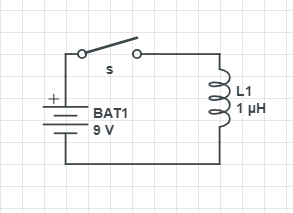I have been studying about inductors from last two weeks and i'm stucked here, It would be great if someone helps me.
Suppose i have a circuit like one shown abve;

When i close the switch at $t = 0$ then current starts flowing. As the first electron passes through the inductor it creates a small magnetic-field. As the current is changing the inductor will induce an emf in opposite direction. (True)?
Now the confusing part: According to the Kirchhoff's rule:
The directed sum of the electrical potential differences (voltage) around any closed network is zero.
Suppose at t = 0.001 , current has not reached it's max value then the induced emf $\epsilon \neq V$. I mean $V- \varepsilon \neq 0$?
What i'm missing?
